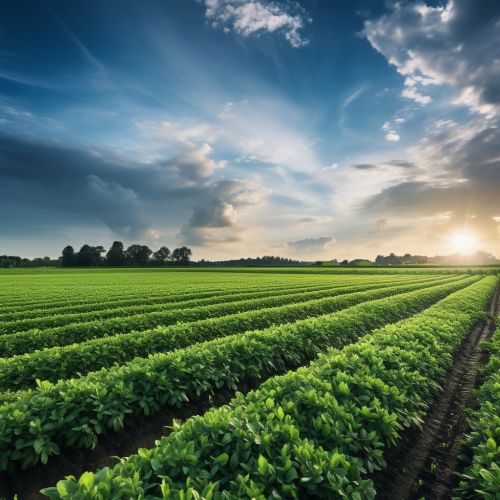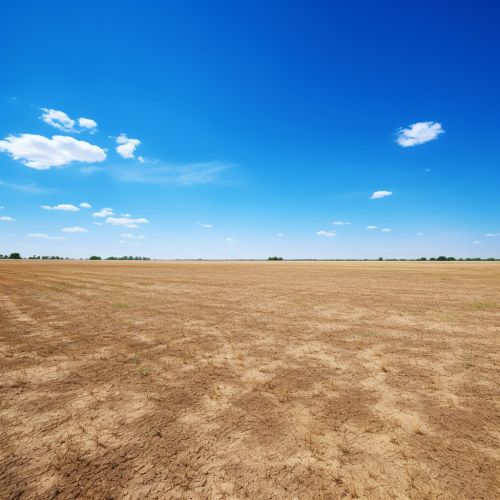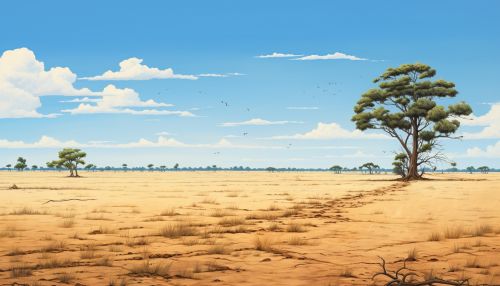The Impact of Climate Change on Global Agriculture
Introduction
Climate change, also known as global warming, is a long-term alteration in the statistical distribution of weather patterns over periods of time that range from decades to millions of years. It may be a change in the average weather conditions or a change in the distribution of weather events with respect to an average, for example, greater or fewer extreme weather events. Climate change is caused by factors such as biotic processes, variations in solar radiation received by Earth, plate tectonics, and volcanic eruptions. Certain human activities have also been identified as significant causes of recent climate change, often referred to as global warming. Read more about Climate Change.
Agriculture is the science, art and practice of cultivating plants and livestock. Agriculture was the key development in the rise of sedentary human civilization, whereby farming of domesticated species created food surpluses that enabled people to live in cities. The history of agriculture began thousands of years ago. After gathering wild grains beginning at least 105,000 years ago, nascent farmers began to plant them around 11,500 years ago. Pigs, sheep, and cattle were domesticated over 10,000 years ago. Crops originate from at least 11 regions of the world. Industrial agriculture based on large-scale monoculture has in the past century come to dominate agricultural output, though about 2 billion people worldwide still depend on subsistence agriculture. Read more about Agriculture.


Impact of Climate Change on Agriculture
Climate change has the potential to negatively affect the global agriculture industry through alterations in temperature, rainfall, CO2 concentrations and the prevalence of pests and diseases. These changes can result in altered crop growth and reduced yields, especially in regions that are already food insecure.
Temperature Changes
One of the most direct ways climate change is impacting agriculture is through changes in temperature. Crops have specific temperature ranges in which they can grow and produce yield. If temperatures exceed the optimal range for a particular crop, it can lead to reduced yields. For example, wheat, maize, and rice, which are three of the world's staple crops, have all shown yield reductions at higher temperatures. This is particularly concerning as global temperatures are predicted to continue rising due to climate change. Read more about Effects of Global Warming.


Changes in Rainfall
Changes in rainfall patterns due to climate change can also have a significant impact on agriculture. Both the amount and timing of rainfall are crucial factors in crop growth. Too little rainfall can lead to drought and crop failure, while too much can lead to flooding and crop disease. Changes in the timing of rainfall can also disrupt the growing season and reduce yields. This is particularly problematic in regions that rely on rainfall for irrigation.


Increased CO2 Concentrations
Increased concentrations of CO2 in the atmosphere can have both positive and negative effects on agriculture. On the positive side, CO2 is essential for photosynthesis, and higher concentrations can increase crop growth in a process known as CO2 fertilization. However, the benefits of CO2 fertilization may be offset by other negative effects of climate change, such as increased temperatures and changes in rainfall. Additionally, higher CO2 concentrations can reduce the nutritional quality of some crops, including reductions in protein, iron, and zinc levels in crops like rice and wheat. Read more about Carbon Dioxide in Earth's Atmosphere.


Pests and Diseases
Climate change can also influence the prevalence and distribution of pests and diseases, which can have significant impacts on agriculture. Warmer temperatures can allow pests and diseases to expand into new areas where they were previously unable to survive. Additionally, changes in temperature and rainfall can disrupt the lifecycle of pests and diseases, potentially leading to more frequent or severe outbreaks.
Adaptation and Mitigation Strategies
Given the potential impacts of climate change on agriculture, it is crucial to develop and implement adaptation and mitigation strategies. These strategies can help to reduce the vulnerability of the agricultural sector to climate change and can also help to reduce the sector's contributions to climate change.
Adaptation Strategies
Adaptation strategies aim to reduce the vulnerability of the agricultural sector to climate change. This can include changes in farming practices, such as shifting planting dates to avoid periods of extreme weather, adopting drought-resistant crop varieties, or improving irrigation systems. Other strategies can include diversifying income sources to reduce reliance on agriculture, or improving access to weather forecasts and other climate information to help farmers plan ahead. Read more about Climate Change Adaptation.


Mitigation Strategies
Mitigation strategies aim to reduce the contributions of the agricultural sector to climate change. This can include practices that reduce greenhouse gas emissions, such as improving the efficiency of fertilizers and manure management, or adopting sustainable farming practices like organic farming or agroforestry. Other strategies can include increasing the carbon storage capacity of agricultural lands through practices like cover cropping or conservation tillage. Read more about Climate Change Mitigation.
